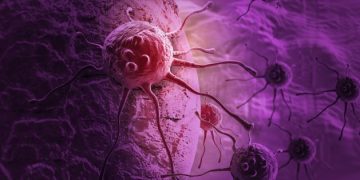Acute leukemia is a fast-growing type of blood cancer. It starts in blood-forming cells in your bone marrow. These cells normally become white blood cells, which help fight infection and protect other healthy tissues in your body. With acute leukemia, the cancerous blood cells start to crowd out the normal blood cells and prevent them from doing their job. This makes it hard for your body to get the oxygen and nutrients it needs to function.
Your bone marrow also makes blood stem cells, which become mature blood cells over time. These cells include red blood cells that carry oxygen and other substances to all parts of your body, and white blood cells that fight infection. Leukemia can develop when these cells grow too quickly and don’t stop dividing as they should. The resulting cancerous, immature cells are called blasts.
There are several types of acute leukemia, and each one grows differently. The type of leukemia you have determines how fast it progresses and how quickly it responds to treatment.
Leukemia can be caused by changes in your genes or chromosomes. This can happen for no reason or it may be inherited from your family. Acute lymphocytic leukemia (ALL) is the most common type of childhood leukemia, but it can affect adults as well. Some cases of ALL are related to a gene mutation known as the Philadelphia chromosome, which was discovered more than 50 years ago at Penn Medicine.

Your doctor diagnoses leukemia based on the results of tests you have and your symptoms. These tests include a physical exam and blood work. The blood work measures the levels of certain chemicals in your body, including hemoglobin and platelets. It also checks your kidneys and liver. Other tests can look for abnormalities in your blood vessels and bones.
If you’re diagnosed with leukemia, your doctor will create a treatment plan based on the type of leukemia you have and how far it has spread. Your treatment will likely include chemotherapy and other treatments.
Chemotherapy is a group of medicines that kill cancer cells and normal cells that grow too rapidly. You may also need other treatments, such as a blood transfusion or antibiotics to treat infections you have.
These cancers can relapse, or come back, after you finish treatment. Your doctor will check your condition regularly and give you new treatments if needed. Your prognosis depends on the type of leukemia you have, how far it has spread, and your overall health. No two people are the same, so your chances of surviving leukemia vary. Use this tool to learn more about the estimated survival rates for people who have your type of leukemia. Then, talk with your doctor about what you can do to improve your chances of a good outcome.








